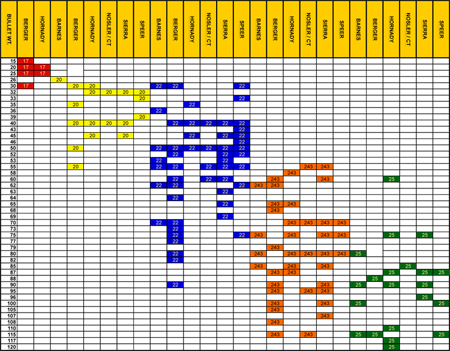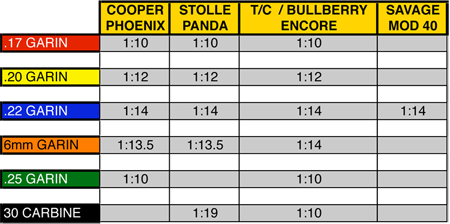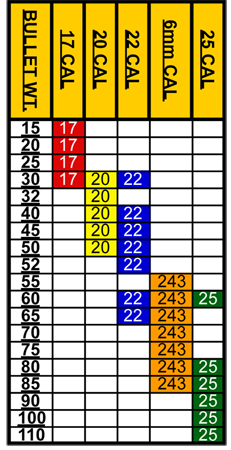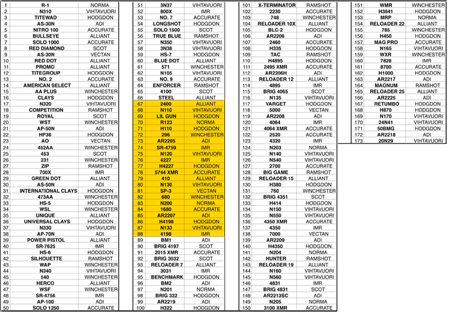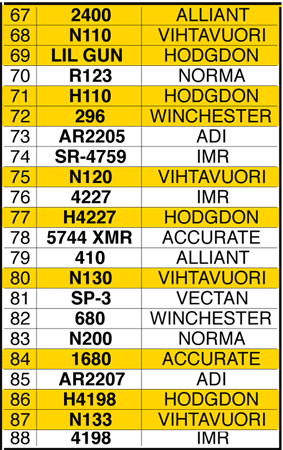Bullet Selection Considerations
In the 1950s and 60s, the most frustrating part of trying to develop small caliber cartridges with light bullets was the almost total lack of appropriate, commercially produced bullets. 17 caliber bullets were rare and 20 caliber bullets didn’t exist, and while there were a fair number of 22 caliber bullets, few were what would be considered “high performance”. When considering the overall small cartridge concept, the first task was to assemble a matrix of currently available bullets. The only criteria were caliber and weight – shape, composition, and Ballistic coefficient would come later. From famine to feast! There is now a virtual continuum of available weights and calibers from 17 caliber 15 gr to 25 caliber 120 gr.
Since we are dealing with cases of modest capacity, I chose rifling twist rates for light to moderate bullets – tests of heavier weights would come later. All barrels are stainless steel. The Cooper and Bullberry barrels are from Wilson, while the barrels for the Panda were supplied by Kreiger. Cooper chambered and installed the barrels on all their Phoenix rifles, Gary Ocock of GO Precision chambered, and installed the barrels on the Panda rifles. He also produced a special pillar bedded stock which allows for quick barrel change while allowing adequate clearance for a pressure sensing strain gauge.
Below is a listing of current barrels.
Below is a list of the bullets selected for initial tests. Not everyone has been tried, but all are available for future consideration.
The comments on great variety of bullets also apply to the current selection of powders. The proliferation of different burn rates, granular formats, stabilizers offers the hand loader unprecedented flexibility in pursuit of the “sweet spot” load for his particular firearm.
The following chart is typical charts that can be retrieved from numerous sources.
As with the bullets, the master powder list was first narrowed to the most appropriate range, and then further reduced to a more manageable group of six. Additional types will be tried as time permits.
